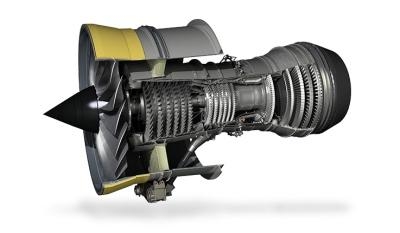Tue, Apr 20, 2021
AD 2021-08-01 Prompted By Maintenance That Resulted In Damage To Certain LPC Blades
The FAA is adopting a new airworthiness directive (AD) for certain Rolls-Royce Deutschland Ltd & Co KG (RRD) RB211 Trent 768-60, RB211 Trent 772-60, and RB211 Trent 772B-60 model turbofan engines.

This AD was prompted by maintenance that resulted in damage to certain low-pressure compressor (LPC) blades, resulting in increased susceptibility to cracking in the LPC blade root. This AD requires initial and repetitive inspections of the blade root of certain LPC blades and re-lubrication of the LPC blades and LPC disk. Depending on the results of the inspections, this AD requires replacement of the LPC blades. As a terminating action to the inspection and re-lubrication requirements, this AD requires restoration of the LPC blade as well as examination and re-lubrication of the LPC disk. The FAA is issuing this AD to address the unsafe condition on these products. This AD is effective April 30, 2021.
Supplementary Information: The European Union Aviation Safety Agency (EASA), which is the Technical Agent for the Member States of the European Community, has issued EASA AD 2020-0253, dated November 12, 2020, to address an unsafe condition for the specified products. The MCAI states:
- In-service experience has shown that certain LP compressor blades installed on Trent 700 engines may have been subjected to maintenance actions that caused damage, making the affected blades more susceptible to cracking.
- This condition, if not detected and corrected, could lead to blade or disc failure and consequent engine in-flight shut-down, possibly resulting in reduced control of the aeroplane.
- To address this potential unsafe condition, Rolls-Royce issued the inspection NMSB to provide inspection instructions. Rolls-Royce also issued the restoration NMSB to provide in-shop restoration instructions.
- For the reasons described above, this [EASA] AD requires repetitive on-wing ultra-sonic (US) inspections of the blade roots of the affected blades, subsequent re-lubrication of the affected blades and discs and, depending on findings, accomplishment of applicable corrective action(s). This [EASA] AD also requires in-shop restoration of the affected blades and discs to a serviceable condition, which constitutes terminating action for the repetitive US inspections and re-lubrications as required by this [EASA] AD.
You may obtain further information by examining the MCAI in the AD docket at www.regulations.gov by searching for and locating Docket No. FAA-2021-0200.
More News
Aero Linx: Model Aeronautical Association of Australia MAAA clubs are about fun flying, camaraderie and community. For over 75 years, the MAAA has been Australia’s largest fl>[...]
Touchdown Zone Lighting Two rows of transverse light bars located symmetrically about the runway centerline normally at 100 foot intervals. The basic system extends 3,000 feet alon>[...]
“Discovery and innovation are central to our mission at Virgin Galactic. We’re excited to build on our successful record of facilitating scientific experiments in subor>[...]
How To Get A Story On Aero-TV News/Feature Programming How do I submit a story idea or lead to Aero-TV? If you would like to submit a story idea or lead, please contact Jim Campbel>[...]
Student Pilot Reported That During Rotation, “All Of A Sudden The Back Of The Plane Kicked To The Right..." Analysis: The student pilot reported that during rotation, “>[...]
 ANN's Daily Aero-Linx (05.02.24)
ANN's Daily Aero-Linx (05.02.24) ANN's Daily Aero-Term (05.02.24): Touchdown Zone Lighting
ANN's Daily Aero-Term (05.02.24): Touchdown Zone Lighting Aero-News: Quote of the Day (05.02.24)
Aero-News: Quote of the Day (05.02.24) ANN FAQ: Contributing To Aero-TV
ANN FAQ: Contributing To Aero-TV NTSB Final Report: Cirrus Design Corp SR20
NTSB Final Report: Cirrus Design Corp SR20



